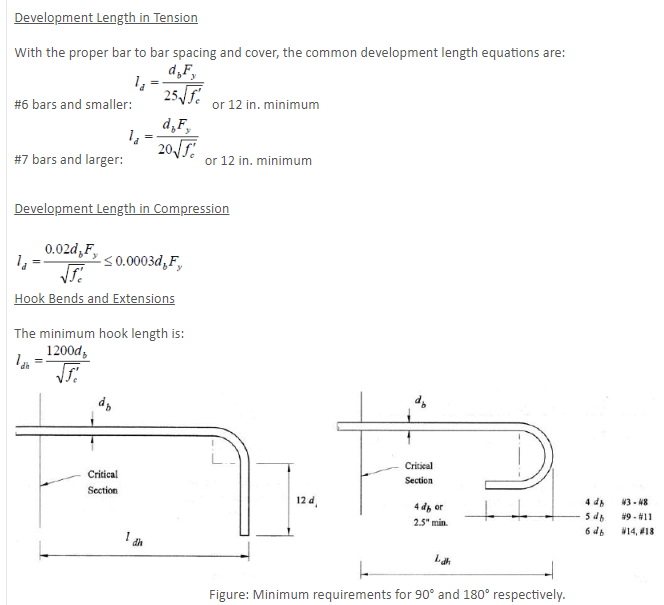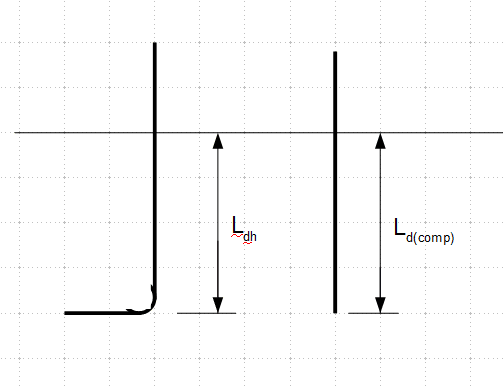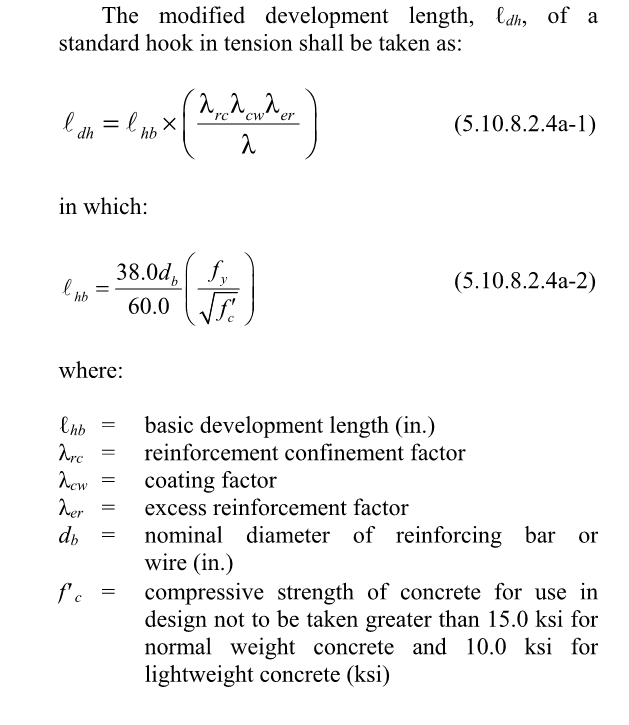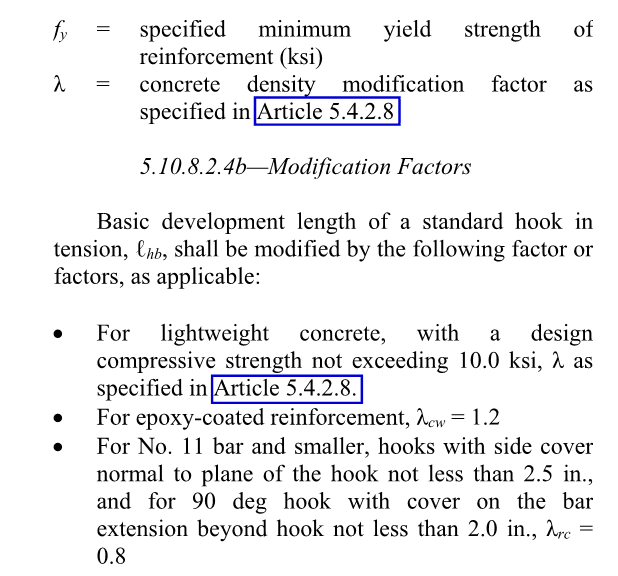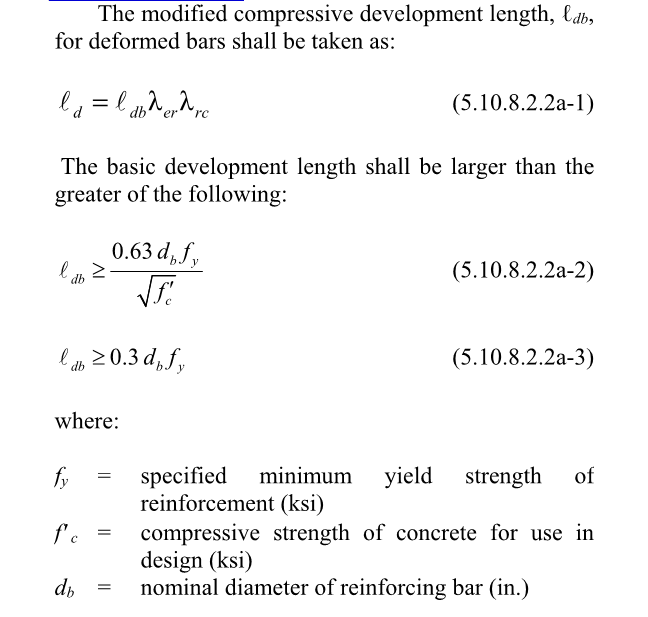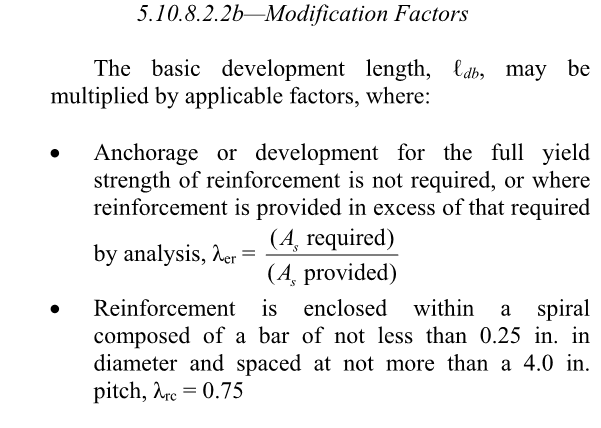Quade999
Civil/Environmental
- May 29, 2020
- 61
Hi Everyone,
If I have a situation like the one below where I have a retaining wall connected to a footing slab with the reinforcement having enough embedment for tension development only, does the reinforcement on the compression bending side of the wall need to be fully developed for the compression yield strength at the interface? Basically, the hook extending into the slab has enough embedment to attain yielding in tension but not in compression (as hooks don't contribute to compression development). For interface shear, the codes say that the reinforcement has to be fully developed on either side, but I take it that they mean fully developed for the yield strength in tension (as the reinforcement provides a clamping force. i.e. resists the shear with tension). If both bars shown have full development for the tension yield strength, then do they both contribute to interface shear resistance? Or do I need to meet compression development length requirements?

Thanks
If I have a situation like the one below where I have a retaining wall connected to a footing slab with the reinforcement having enough embedment for tension development only, does the reinforcement on the compression bending side of the wall need to be fully developed for the compression yield strength at the interface? Basically, the hook extending into the slab has enough embedment to attain yielding in tension but not in compression (as hooks don't contribute to compression development). For interface shear, the codes say that the reinforcement has to be fully developed on either side, but I take it that they mean fully developed for the yield strength in tension (as the reinforcement provides a clamping force. i.e. resists the shear with tension). If both bars shown have full development for the tension yield strength, then do they both contribute to interface shear resistance? Or do I need to meet compression development length requirements?

Thanks

